Abstract
Twenty patients with haematological malignancies who developed Clostridium difficile bowel infection or colonisation are described. All isolates of C difficile were toxigenic in vitro and faecal cytotoxin (toxin B) was detected in 20/26 episodes. Ten of 20 episodes with detectable faecal cytotoxin were associated with typical antibiotic associated diarrhoea. In the other 10 episodes (nine patients), there was a severe unusual illness which was associated with detection of C difficile. The unusual features of the illness were pronounced jaundice (total bilirubin greater than or equal to 44 mumol/l), abdominal pain and distension, and initial constipation followed either by diarrhoea or by large bowel stasis. Four of these patients died within seven days. Bacteraemia was often a presenting feature in neutropenic patients subsequently shown to have C difficile. This was not the case in non-neutropenic patients. Bacteraemia was commonly polymicrobial and in two cases C difficile was isolated from blood culture. The clinical implications of recognition of this atypical C difficile associated syndrome are discussed.
Full text
PDF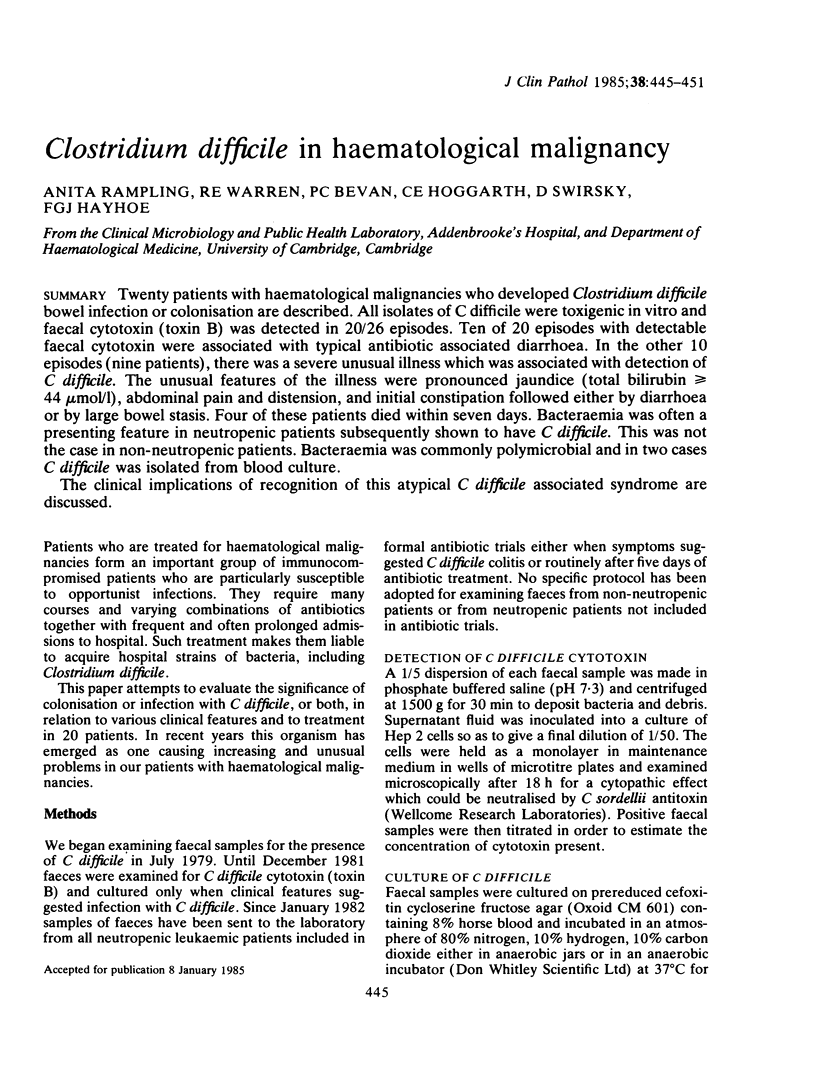
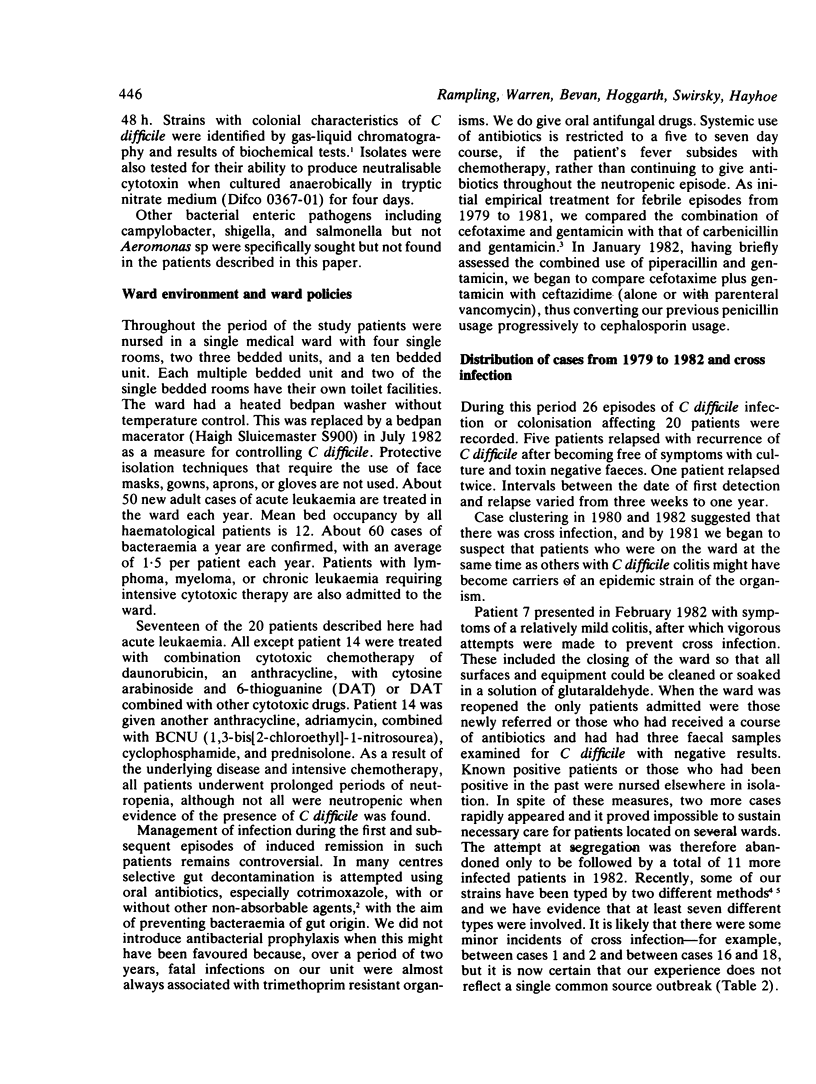
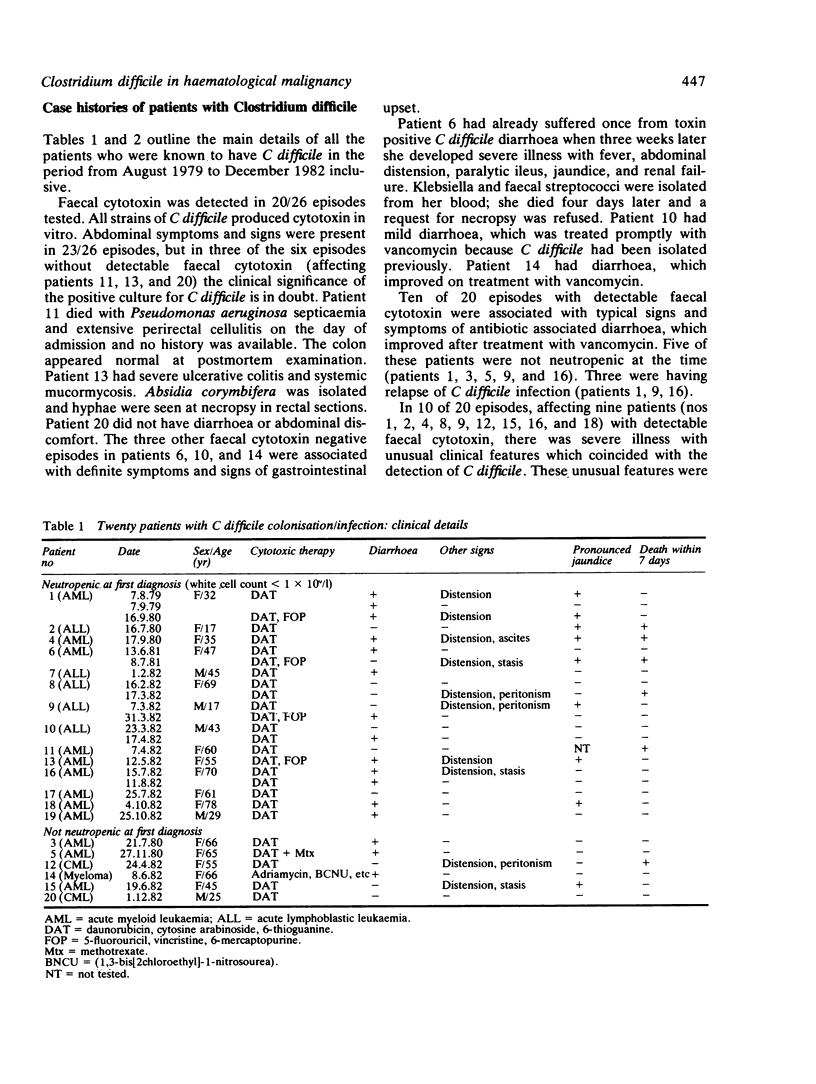
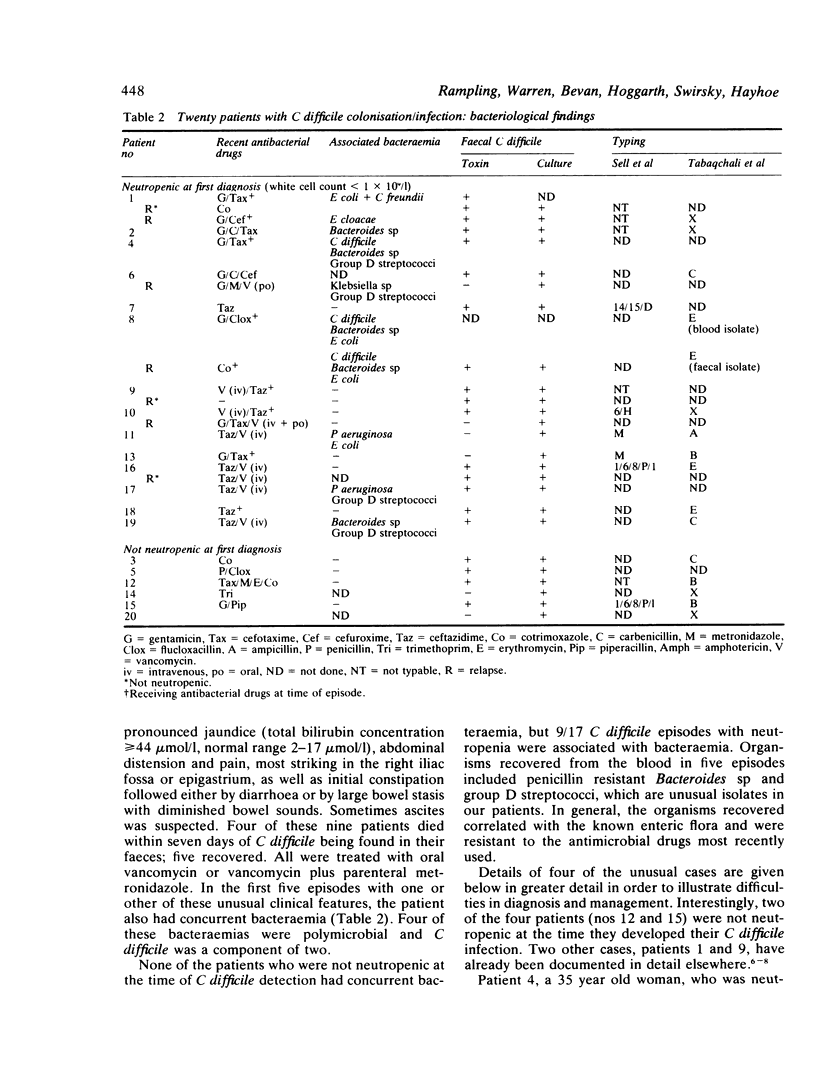
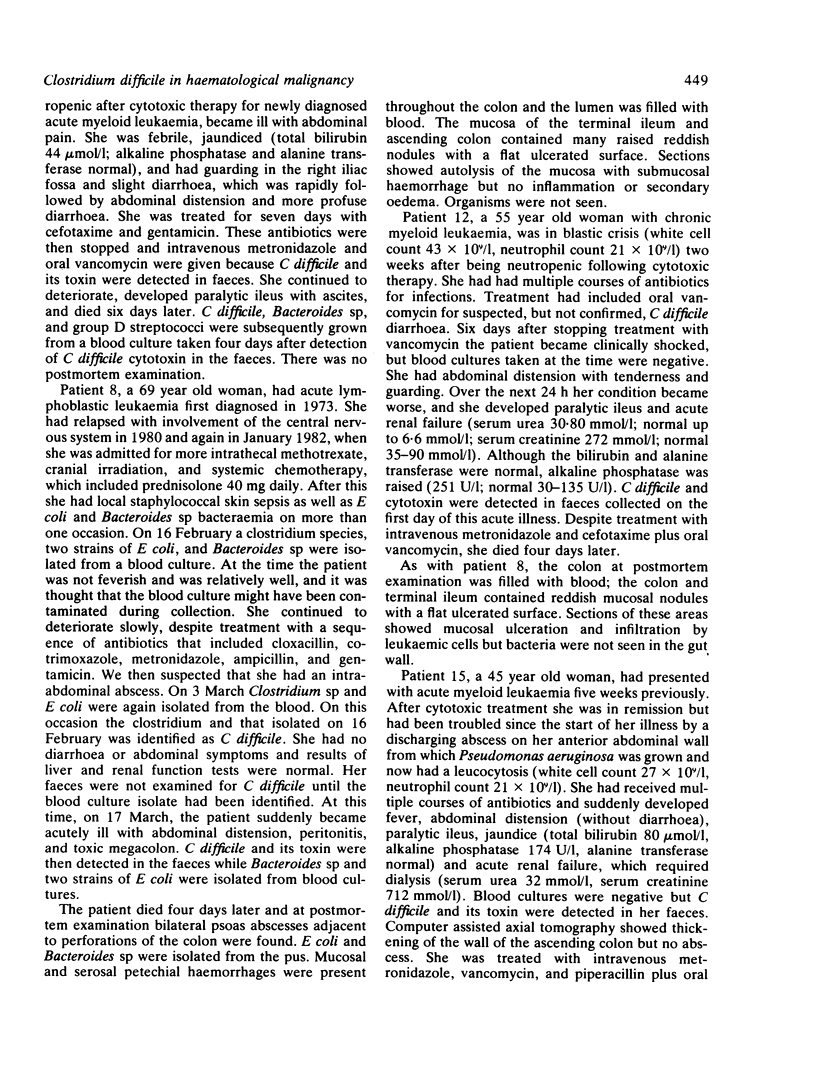
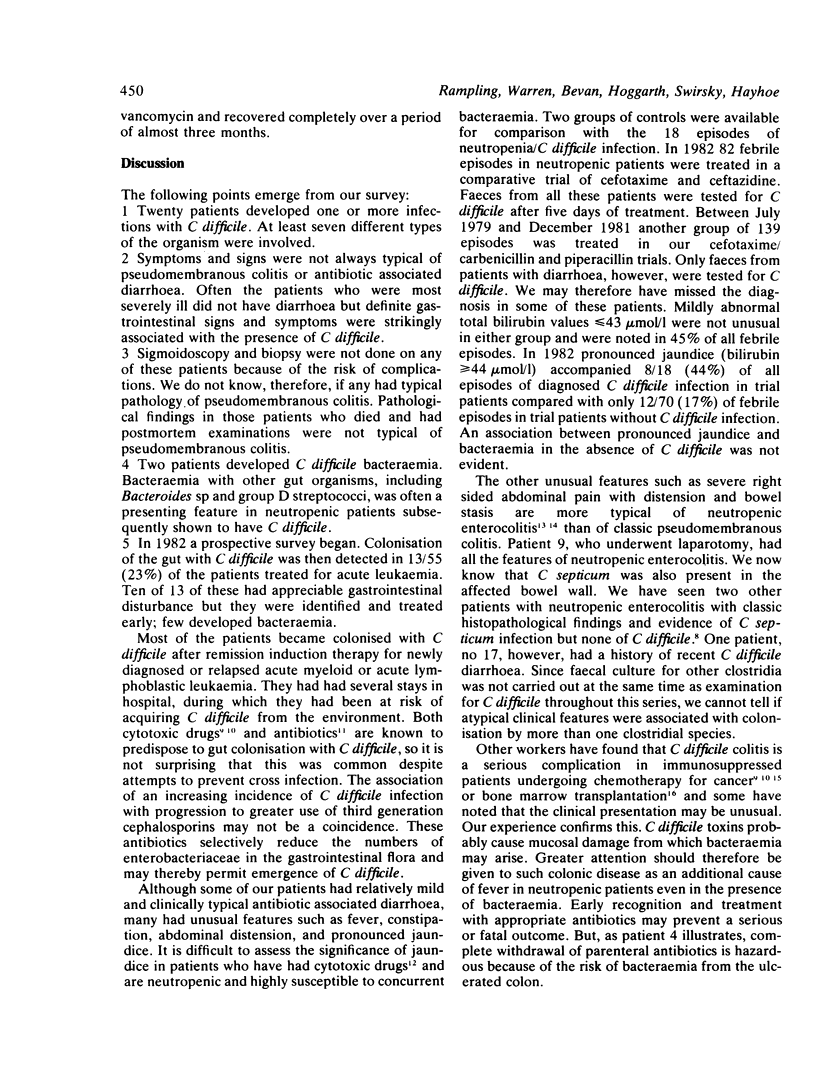
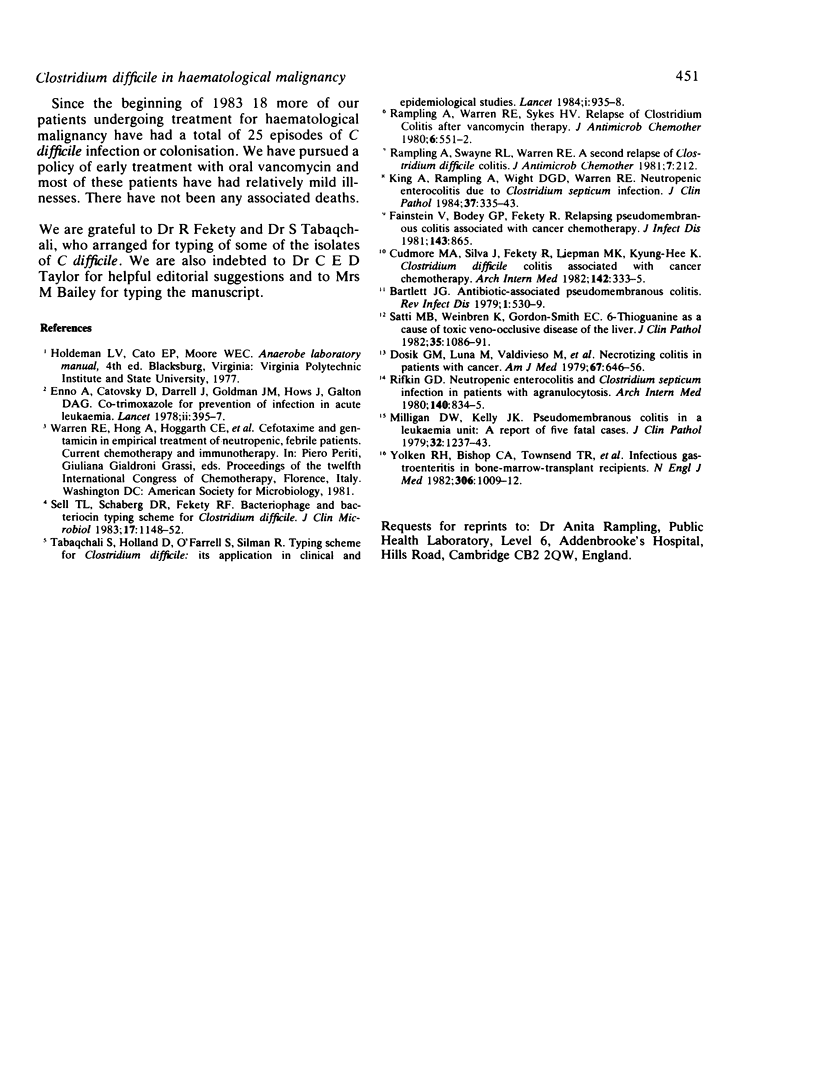
Selected References
These references are in PubMed. This may not be the complete list of references from this article.
- Bartlett J. G. Antibiotic-associated pseudomembranous colitis. Rev Infect Dis. 1979 May-Jun;1(3):530–539. doi: 10.1093/clinids/1.3.530. [DOI] [PubMed] [Google Scholar]
- Cudmore M. A., Silva J., Jr, Fekety R., Liepman M. K., Kim K. H. Clostridium difficile colitis associated with cancer chemotherapy. Arch Intern Med. 1982 Feb;142(2):333–335. [PubMed] [Google Scholar]
- Dosik G. M., Luna M., Valdivieso M., McCredie K. B., Gehan E. A., Gil-Extremera B., Smith T. L., Bodey G. P. Necrotizing colitis in patients with cancer. Am J Med. 1979 Oct;67(4):646–656. doi: 10.1016/0002-9343(79)90248-1. [DOI] [PubMed] [Google Scholar]
- Enno A., Catovsky D., Darrell J., Goldman J. M., Hows J., Galton D. A. Co-trimoxazole for prevention of infection in acute leukaemia. Lancet. 1978 Aug 19;2(8086):395–397. doi: 10.1016/s0140-6736(78)91865-2. [DOI] [PubMed] [Google Scholar]
- King A., Rampling A., Wight D. G., Warren R. E. Neutropenic enterocolitis due to Clostridium septicum infection. J Clin Pathol. 1984 Mar;37(3):335–343. doi: 10.1136/jcp.37.3.335. [DOI] [PMC free article] [PubMed] [Google Scholar]
- Milligan D. W., Kelly J. K. Pseudomembranous colitis in a leukaemia unit: a report of five fatal cases. J Clin Pathol. 1979 Dec;32(12):1237–1243. doi: 10.1136/jcp.32.12.1237. [DOI] [PMC free article] [PubMed] [Google Scholar]
- Rampling A., Swayne R. L., Warren R. E. A second relapse of Clostridium difficile colitis. J Antimicrob Chemother. 1981 Feb;7(2):212–212. doi: 10.1093/jac/7.2.212. [DOI] [PubMed] [Google Scholar]
- Rampling A., Warren R. E., Sykes H. V. Relapse of Clostridium colitis after vancomycin therapy. J Antimicrob Chemother. 1980 Jul;6(4):551–552. doi: 10.1093/jac/6.4.551. [DOI] [PubMed] [Google Scholar]
- Rifkin G. D. Neutropenic enterocolitis and Clostridium septicum infection in patients with agranulocytosis. Arch Intern Med. 1980 Jun;140(6):834–835. [PubMed] [Google Scholar]
- Satti M. B., Weinbren K., Gordon-Smith E. C. 6-thioguanine as a cause of toxic veno-occlusive disease of the liver. J Clin Pathol. 1982 Oct;35(10):1086–1091. doi: 10.1136/jcp.35.10.1086. [DOI] [PMC free article] [PubMed] [Google Scholar]
- Sell T. L., Schaberg D. R., Fekety F. R. Bacteriophage and bacteriocin typing scheme for Clostridium difficile. J Clin Microbiol. 1983 Jun;17(6):1148–1152. doi: 10.1128/jcm.17.6.1148-1152.1983. [DOI] [PMC free article] [PubMed] [Google Scholar]
- Tabaqchali S., Holland D., O'Farrell S., Silman R. Typing scheme for Clostridium difficile: its application in clinical and epidemiological studies. Lancet. 1984 Apr 28;1(8383):935–938. doi: 10.1016/s0140-6736(84)92392-4. [DOI] [PubMed] [Google Scholar]


